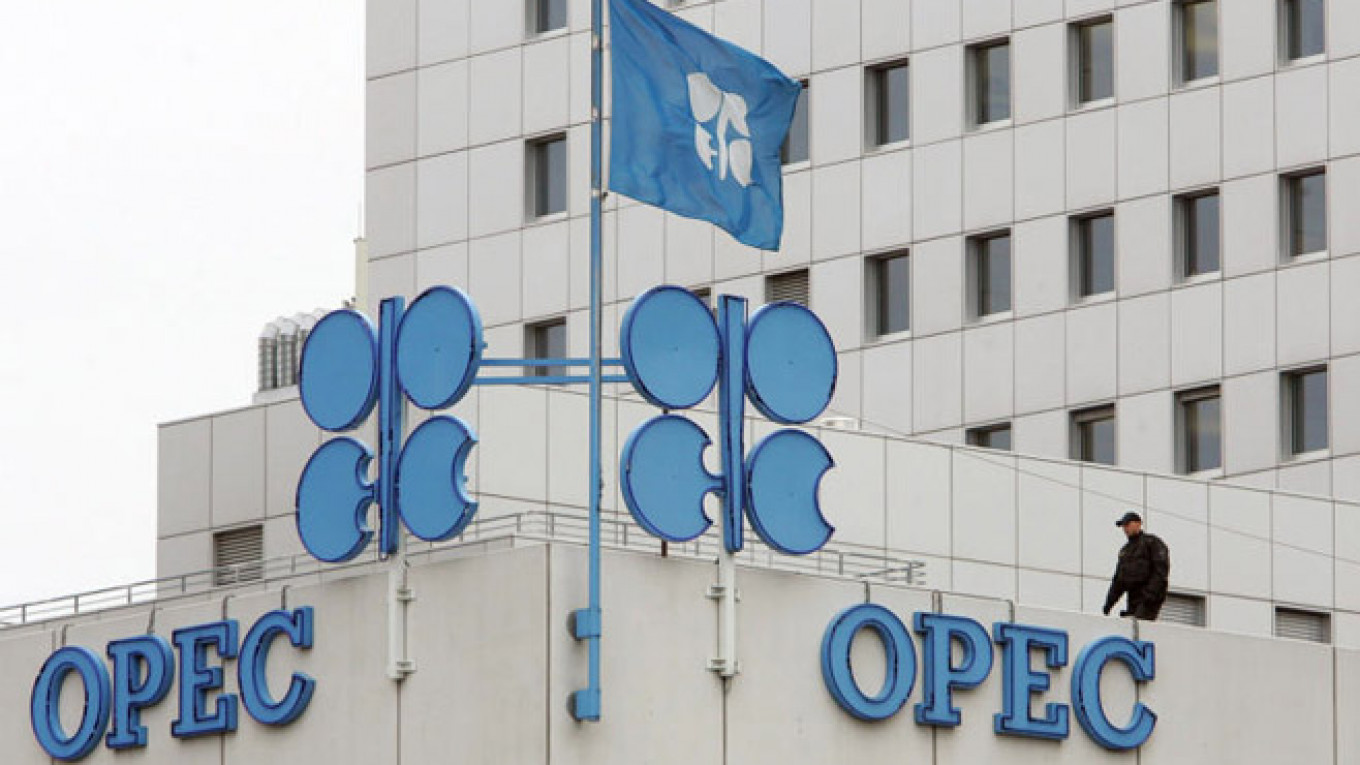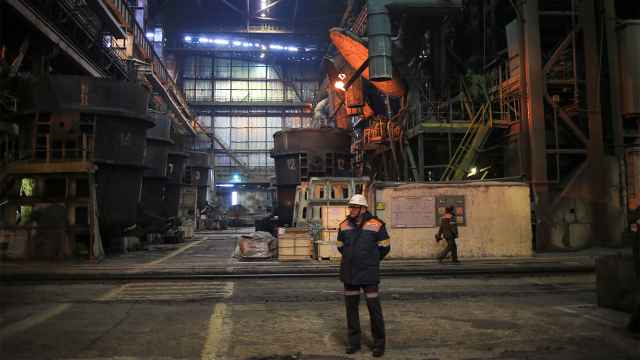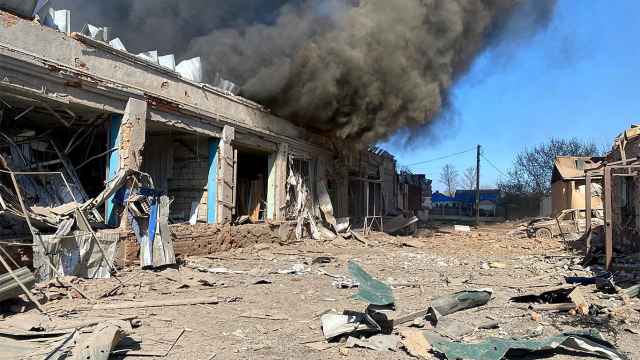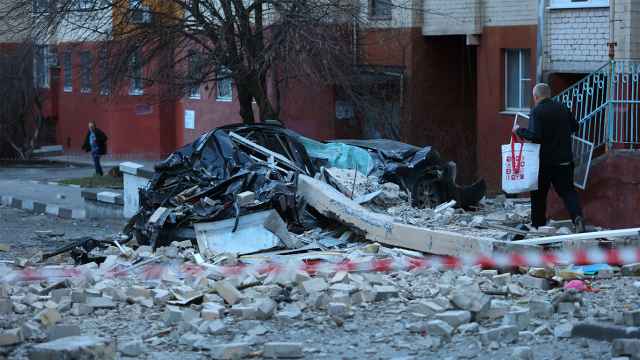Oil ministers from member states of the Organization of Petroleum Exporting Countries (OPEC) will meet in Vienna on Thursday to try to formulate a response to the recent sharp fall in the price of crude oil and, more fundamentally, to the threat posed to group's future as oil supplies from other countries, especially from the United States, continue to rise. This is undoubtedly OPEC's most important meeting in decades, and to a large extent, decisions taken by OPEC, whether this week or in the coming months, will have a direct impact on several of Russia's key economic indicators and how the country survives Western sanctions.
The price of oil has fallen partly because of economics — there is too much supply as demand growth is slowing — and partly because of politics. Given that none of the non-OPEC producers, including Russia, will make any price-supporting cuts, the trading price of oil over the coming months will directly depend on OPEC actions. The trading price of oil in the coming years will also directly depend on whether OPEC can reach an internal strategy consensus on how to respond to the challenge or rising supplies from other countries. Such a consensus has eluded OPEC since before the first Gulf war in 1990.
OPEC actions will, in addition to news from eastern Ukraine, also have a direct bearing on the ruble's foreign exchange rate and Russia's financial strength. At an average of $80 per barrel for Urals crude and assuming no change in the current ruble-dollar exchange rate or planned spending, the federal budget is expected to run a deficit of between 2 to 2.5 percent of GDP in 2015 and 2016. Ordinarily a deficit of that size is no big deal, but these are not ordinary times. The Finance Ministry cannot tap external debt markets and has only limited ability to raise new domestic debt. So it has to cover any deficit out of the sovereign wealth funds at a time when the queue of state companies looking for financial support grows longer. Anything more than another 12 to 18 months of financial sector sanctions plus low oil will strain the nation's balance sheet coming up to the next parliamentary elections.
The only positive backdrop to this particular oil price slide is that almost all of the 12 OPEC member countries today need a much higher oil price to balance their respective budgets than was the case in 2008 when oil last collapsed. It means that while the rich Gulf Arab producers can survive a period of low oil for some time, there is a tighter time limit this time. The weaker countries, such as Venezuela, are already suffering financial pain.
The only way the organization can address the current oil price weakness and prevent a further drop is by immediately cutting at least a million barrels of current production and, by its own admission, cutting up to 2 million barrels over the next two years as non-OPEC supply grows faster than expected global demand growth. But most of the OPEC producers do not have the financial reserves of the Gulf Arab producers and have consistently opposed Saudi Arabia's demand for pro-rata cuts. Saudi Arabia's position is that it has spent billions adding capacity and raising production and should not, as has happened in the past, be expected to shoulder the bulk of the cuts.
That's a disagreement that will not be easily resolved and could lead to an even lower oil price this winter as the richer Gulf producers wait for the financial pain on the other member states to worsen in the hope that a deal may then be agreed.
The other issue of how to deal with rising non-OPEC production, especially in the United States, will also be difficult to resolve. OPEC has consistently said it will always try to protect its market share over the longer term. The major producers make little effort to hide their frustration that, having spent billions building capacity to become a reliable energy partner to the consumer nations, their position is now being totally disregarded. The U.S, which burns more than 19.1 million barrels of oil each day, or just more than a fifth of the world's total, is on a mission to become self-sufficient if not a competitor to OPEC as a global market supplier. Much of the commentary predicting cheaper oil for years ahead focuses on the rapid growth in U.S. output and assumes an uninterrupted trend into the next decade.
According to data from the International Energy Agency (IEA), U.S. oil output has risen from 8 million barrels per day in 2009 to an expected 11.7 million barrels this year and has a 2015 forecast of 12.6 million barrels. The U.S. is still importing more than 7 million barrels of crude each day, greater than the 6 million barrels imported by China, the world's next biggest consumer of oil. So the U.S. is a very long way from becoming a net oil exporter and will only achieve that early in the next decade if shale production growth remains as fast as it has been. Until then, if the U.S. does try to gain some share of the global oil trade, it will have to import one extra barrel for every barrel of crude or product it exports.
Undoubtedly the U.S. government will not try to check shale oil volume growth in support of OPEC. In fact, early in 2015 the Republican Party-dominated Congress is expected to approve the Keystone Pipeline System, which is intended to import 700,000 barrels per day from Canada's Alberta tar sands. Energy self-sufficiency is too big a prize to allow a slip because of sentiment over previously strong but now fading relationships in the Middle East.
There are many unknowns in the U.S. shale industry: the size of recoverable reserves, the sustainability of existing wells and the cost of future production. There are far too many serious technical and economic questions currently unknown to be complacent about shale oil volumes rising at the recent pace indefinitely. But clearly the current momentum is strong and will make an effective policy response from OPEC increasingly urgent. This is something that Russia will also be desperately hoping for.
Oil price forecasting is notoriously momentum-driven and almost always misses the major turning points in the industry, albeit usually with great clarity on the reason why a sudden change was inevitable with the benefit of hindsight analysis. Ever since the 1950s there have been several scares about the coming of so-called peak oil, which would lead to a permanent surge in prices, and just as many confident predictions of near permanent low prices. For example, in 1998, when Brent traded not far off $10 per barrel, forecasters were confident that gasoline would soon be given free with new cars. In 2007 a common view was that crude oil would soon trade up to $200 per barrel if not higher.
OPEC is used to playing the long game, and the major players can sit out periods of uncertainty as they have done in the past. The biggest challenge will be to achieve an internal agreement or, if impossible, to restructure the organization to exclude the more problematic members, such as Iran and Venezuela. Either way, an effective response seems unlikely over the medium term, and Urals crude averaging around current levels, or lower, through the winter is more likely than a price recovery. That is bad news for the ruble, the federal budget and investor sentiment.
Chris Weafer is a senior partner with Macro Advisory, a consultancy advising macro hedge funds and foreign companies looking at investment opportunities in Russia.








